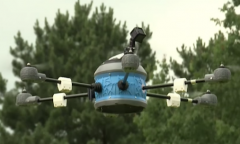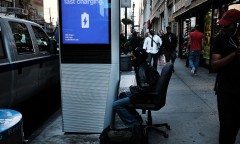By Vishal Goel, | December 26, 2016

The new invention, published on December 25 in the journal Advanced Material, has potential applications in a wide number of fields. (Yan R./CC BY-ND 2.0)
US-based scientists have developed a self-healing ionic conductor, which is electrically activated to power artificial muscles. Besides having the self-healing property, the material is also transparent and mechanically stretchable and can be used to improve electronic devices, batteries, and robots.
Like Us on Facebook
The new invention, published on December 25 in the journal Advanced Material, has potential applications in a wide number of fields. Besides giving robots the ability to self-heal after a mechanical failure, the material can extend the lifetime of lithium ion batteries used in various electronic devices including electrical cars, and improve biosensors used in the medical field.
The soft rubber-like material can stretch 50 times its original length, is low-cost and easy-to-produce. After being cut, it can completely re-attach itself, or heal, in 20 hours at room temperature. In fact, after only five minutes of healing the material can be stretched two times its original length.
Chao Wang, an assistant professor of chemistry and one of the authors of the paper, worked on the material after getting inspired by his lifelong love of Wolverine, the comic book character who can self-heal. "Creating a material with all these properties has been a puzzle for years," said Wang.
Ionic conductors are a class of materials with key roles in solar energy conversion, energy storage, electronic devices and sensors. Christoph Keplinger, an assistant professor at the University of Colorado, Boulder and another author of the paper had previously demonstrated that stretchable, transparent, ionic conductors could be used to power artificial muscles and to create transparent loudspeakers but did not posses the ability to self-heal from mechanical damage.
Wang solved the problem by using a mechanism called ion-dipole interactions. He combined a polar, stretchable polymer with a mobile, high-ionic-strength salt to create the material with the self-healing properties.
The paper titled "A transparent, self-healing, highly stretchable ionic conductor," can be read here.
-
Use of Coronavirus Pandemic Drones Raises Privacy Concerns: Drones Spread Fear, Local Officials Say

-
Coronavirus Hampers The Delivery Of Lockheed Martin F-35 Stealth Fighters For 2020

-
Instagram Speeds Up Plans to Add Account Memorialization Feature Due to COVID-19 Deaths

-
NASA: Perseverance Plans to Bring 'Mars Rock' to Earth in 2031

-
600 Dead And 3,000 In The Hospital as Iranians Believed Drinking High-Concentrations of Alcohol Can Cure The Coronavirus

-
600 Dead And 3,000 In The Hospital as Iranians Believed Drinking High-Concentrations of Alcohol Can Cure The Coronavirus

-
COVID-19: Doctors, Nurses Use Virtual Reality to Learn New Skills in Treating Coronavirus Patients











